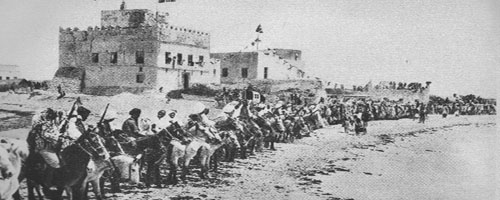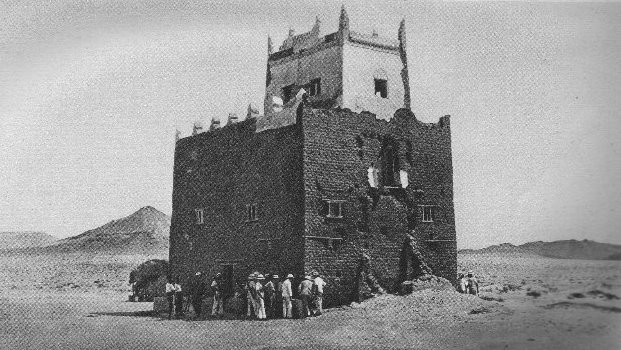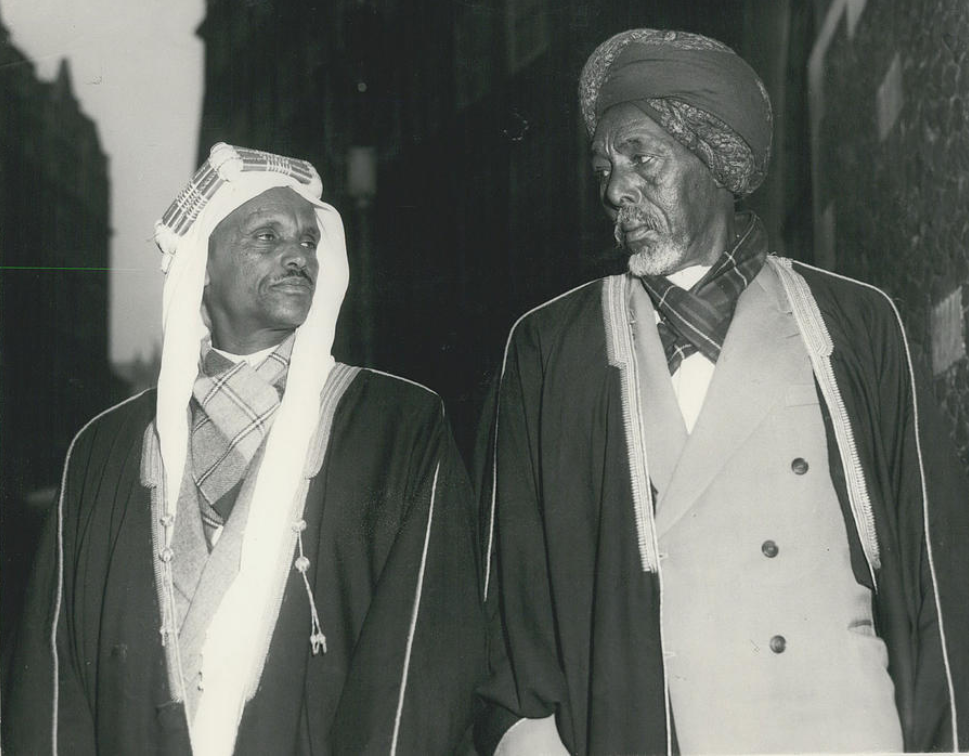|
Somali Aristocratic And Court Titles
This is a list of Somali aristocratic and court titles that were historically used by the Somali people's various sultanates, kingdoms and empires. Also included are the honorifics reserved for Islamic notables as well as traditional leaders and officials within Somali customary law ('' xeer''), in addition to the nobiliary particles set aside for distinguished individuals. Monarchs and aristocrats Below is a list of the royal court titles historically retained by the Somali monarchies and aristocracies. Male titles Kings or Rulers *Suldaan: From the Arabic for Sultan or English "Ruler". Very common title for rulers in the pre-colonial and colonial periods; used throughout the Somali territories, particularly by the Isaaq. Famous Sultans include Fakr ad-Din, the first Sultan of the Sultanate of Mogadishu, who built the 13th-century Fakr ad-Din Mosque; Nur Ahmed Aman, 5th Sultan of the Habr Yunis and one of the founders of the Dervish state; Sultan Abdillahi Deria of ... [...More Info...] [...Related Items...] OR: [Wikipedia] [Google] [Baidu] |
Sultan Abdillahi Sultan Deria
Sultan (; ar, سلطان ', ) is a position with several historical meanings. Originally, it was an Arabic abstract noun meaning "strength", "authority", "rulership", derived from the verbal noun ', meaning "authority" or "power". Later, it came to be used as the title of certain rulers who claimed almost full sovereignty (i.e., not having dependence on any higher ruler) without claiming the overall caliphate, or to refer to a powerful governor of a province within the caliphate. The adjectival form of the word is "sultanic", and the state and territories ruled by a sultan, as well as his office, are referred to as a sultanate ( '. The term is distinct from king ( '), despite both referring to a sovereign ruler. The use of "sultan" is restricted to Muslim countries, where the title carries religious significance, contrasting the more secular ''king'', which is used in both Muslim and non-Muslim countries. Brunei and Oman are the only independent countries which retain the ti ... [...More Info...] [...Related Items...] OR: [Wikipedia] [Google] [Baidu] |
Sultanate Of Mogadishu
The Sultanate of Mogadishu ( so, Saldanadda Muqdisho, ar, سلطنة مقديشو) (fl.9th- 13th centuries), also known as the Kingdom of Magadazo, was a medieval Somali sultanate centered in southern Somalia. It rose as one of the pre-eminent powers in the Horn of Africa under the rule of Fakhr al-Din before becoming part of the powerful and expanding Ajuran Empire in the 13th century. The Mogadishu Sultanate maintained a vast trading network, dominated the regional gold trade, minted its own currency, and left an extensive architectural legacy in present-day southern Somalia. Ethnicity The ethnic origins of the founders of Mogadishu and its subsequent sultanate has been the subject of much debate in Somali Studies. I.M Lewis postulates that the city was founded and ruled by a council of Arab and Persian families.I.M. Lewis, ''Peoples of the Horn of Africa: Somali, Afar, and Saho, Issue 1'', (International African Institute: 1955), p. 47.I.M. Lewis, ''The modern history of Som ... [...More Info...] [...Related Items...] OR: [Wikipedia] [Google] [Baidu] |
Ibrahim Adeer
Ibrahim Adeer ( so, Ibraahin Adeer, ar, ابراهيم أدير) was a Somali ruler. He founded the Sultanate of the Geledi. He subsequently established the Geledi sultanate's ruling house, the Gobroon dynasty, after having to successfully rebel and expel the Ajuran Sultanate and ruled large parts of Horn of Africa. Biography In the late 17th century, Adeer, who was an Ajuran general at the time, gathered 12,000 members of the Geledi tribe, under the leadership of Ibrahim Adeer successfully pushed back the imperial Ajuran army out of Afgooye. He had united all Maay speaking people, Digil & Mirifle clans using both military and diplomatic means. Sultan Ibrahim repeatedly defeated the Ajuran army in numerous battles; marched through what is now known Bakool and Bay regions where he defeated the Madanle clan part of the imperial Ajuran confederacy, and Afgooye where he defeated the Silcis Dynasty also part of the imperial Ajuran confederacy. He marched towards Bardheere and ... [...More Info...] [...Related Items...] OR: [Wikipedia] [Google] [Baidu] |
Sultanate Of Hobyo
The Sultanate of Hobyo ( so, Saldanadda Hobyo, ar, سلطنة هوبيو), also known as the Sultanate of Obbia,''New International Encyclopedia'', Volume 21, (Dodd, Mead: 1916), p.283. was a 19th-century Somali kingdom in present-day northeastern and central Somalia and eastern Ethiopia. It was established in 1870s by Yusuf Ali Kenadid, cousin of the Majeerteen Sultanate ruler Boqor Osman Mahamuud. Administration As with the Majeerteen Sultanate, the Sultanate of Hobyo exerted a strong centralised authority during its existence and possessed all of the organs and trappings of an integrated modern state: a functioning bureaucracy, a hereditary nobility, titled aristocrats, a state flag as well as a professional army.''Horn of Africa'', Volume 15, Issues 1-4, (Horn of Africa Journal: 1997), p.130.Michigan State University. African Studies Center, Northeast African studies, Volumes 11-12, (Michigan State University Press: 1989), p.32. Like the Majeerteen Sultanate, it was a ... [...More Info...] [...Related Items...] OR: [Wikipedia] [Google] [Baidu] |
Yusuf Ali Kenadid
Yusuf Ali Kenadid ( so, Yuusuf Cali Keenadiid; 1837 - 14 August 1911) was a Somali Sultan. He was the founder of the Sultanate of Hobyo in April 1878. He was succeeded atop the throne by his son Ali Yusuf Kenadid. Family Yusuf Ali Kenadid was born into the Bah Yaaqub (part of the larger Bah Dirooble) branch of the Osman Mahamuud, Majeerteen Darod family. He is the father of Osman Yusuf Kenadid, who would go on to create the Osmanya writing script for the Somali language. Yusuf Ali's grandson, Yasin Osman Kenadid, would later help found the Society for Somali Language and Literature. Yusuf Ali was not a lineal descendant of the previous dynasties that governed over northeastern Somalia. He independently amassed his own fortune, and would later evolve into a skilled military leader commanding more senior troops. "Kenadid" was not his surname, but rather a title given to him by his rivals. As per custom among the period's prominent urban traders, to ensure commercial success in ... [...More Info...] [...Related Items...] OR: [Wikipedia] [Google] [Baidu] |
Majeerteen Sultanate
The Majeerteen Sultanate ( so, Suldanadda Majeerteen 𐒈𐒚𐒐𐒆𐒖𐒒𐒖𐒆𐒆𐒖 𐒑𐒖𐒃𐒜𐒇𐒂𐒜𐒒, lit=Boqortooyada Majerteen, ar, سلطنة مجرتين), also known as Majeerteen Kingdom or Majeerteenia and Migiurtinia, was a Somali kingdom centered in the Horn of Africa. Ruled by Boqor Osman Mahamuud during its golden age, the sultanate controlled the areas which are now called Puntland. The earliest mention of the kingdom is the 17th century. The polity had all of the organs of an integrated modern state and maintained a robust trading network. It also entered into treaties with foreign powers and exerted strong centralized authority on the domestic front. History Establishment The Majeerteen Sultanate was established possible around 1600s by Somalis from the Majeerteen Darod clan. It reached prominence during the 19th century, under the reign of the resourceful Boqor (King) Osman Mahamuud. Helen Chapin Metz, ed., ''Somalia: a country st ... [...More Info...] [...Related Items...] OR: [Wikipedia] [Google] [Baidu] |
Mahmud IV
Mahmud IV ( so, Maxamuud IV, ar, محمود), also known as Mahamud Hawadane (''Xawadane''), was a Somali ruler. He was among the earliest Kings of the Majeerteen Sultanate. Reign The Majeerteen Sultanate was established around 1600s CE by Somalis from the Majeerteen Harti Darod clan. It reached prominence during the 19th century, under the reign of the resourceful Boqor (King) Osman Mahamuud.Helen Chapin Metz, ed., ''Somalia: a country study'', (The Division: 1993), p.10. Mahmud IV reigned from an unknown date of accession to 1815. He was succeeded atop the throne by `Uthman II. See also *Somali aristocratic and court titles This is a list of Somali aristocratic and court titles that were historically used by the Somali people's various sultanates, kingdoms and empires. Also included are the honorifics reserved for Islamic notables as well as traditional leaders and o ... References {{s-end Ethnic Somali people 19th-century Somalian people Majeerteen Sultanate ... [...More Info...] [...Related Items...] OR: [Wikipedia] [Google] [Baidu] |
Warsangali
The Warsangali ( so, Warsangeli, ar, قبيلة ورسنجلي) is a major Somali sub clan, part of the Harti clan which itself belongs to one of the largest Somali clan-families - the Darod. In the Somali language, the name Warsangali means "bringer of good news."Cruttenden, C. J.Memoir on the Western or Edoor Tribes, inhabiting the Somali Coast..., '' Journal of the Royal Geographical Society'', 19 (1849), pp. 72-73 The Warsangeli primarily inhabit the Sanaag, Bari , Lower Juba, Gedo, Bay and Bakool regions. Overview In 1848, C. J. Cruttenden reported that the Warsangali and Majeerteen territories were the most commercially valuable in the Nugaal Valley, and that Banians from India had become successful exporters.Cruttenden, C.J. (1848)"On Eastern Africa" London: Royal Geographical Society. Vol. 18, pp. 137-138. The Cal Madow chain of mountains, which is partially inside the clan's territory, extends to the cities of Bosaso (the capital of the Bari region) and Ceeri ... [...More Info...] [...Related Items...] OR: [Wikipedia] [Google] [Baidu] |
Mohamoud Ali Shire
Sultan Mohamoud Ali Shire, MBE ( so, Maxamuud Cali Shire, ar, محمود علي شري) was a Somali elder of the Warsangali clan. He bore the title Sultan * (also referred to as Senior Akil) of the Warsangali. He was centered at Las Khorey. Reign Mohamoud Ali Shire served as Sultan of the Warsangali clan during the late 19th century and early 20th century. Dervish movement Shire was the father-in-law of Sayyid Mohammed Abdullah Hassan, whose Dervish movement fought a two-decade long war against British, Italian and Ethiopian forces. Shire already had four wives of his own. He sought to marry Hassan's daughter Faṭmah, offering a bride-price (''yarad'') of ten camels loaded with draperies and silk, but Hassan refused to give her hand in marriage to Shire. The two leaders regularly engaged in trade and political intrigue. In 1886, Shire and other elders of the Warsangali clan signed a treaty with the British Empire establishing a protectorate in his territory. This cam ... [...More Info...] [...Related Items...] OR: [Wikipedia] [Google] [Baidu] |
Isaaq Sultanate
The Isaaq Sultanate ( so, Saldanadda Isaaq, Wadaad writing, Wadaad: , ar, السلطنة الإسحاقية) was a Somali people, Somali kingdom that ruled parts of the Horn of Africa during the 18th and 19th centuries. It spanned the territories of the Isaaq clan in modern-day Somaliland and Ethiopia. The sultanate was governed by the Guled Dynasty, Rer Guled branch of the Eidagale clan and is the pre-colonial predecessor to the modern Somaliland, Republic of Somaliland. History Origins According to oral tradition, prior to the Guled Dynasty the Isaaq clan-family were ruled by a dynasty of the Tolje'lo branch starting from, descendants of Ahmed nicknamed Tol Je'lo, the eldest son of Ishaaq bin Ahmed, Sheikh Ishaaq's Harari people, Harari wife. There were eight Tolje'lo rulers in total, starting with Boqor Harun () who ruled the Isaaq Sultanate for centuries starting from the 13th century. The last Tolje'lo ruler Garad Dhuh Barar ( so, Dhuux Baraar) was overthrown by a coalition ... [...More Info...] [...Related Items...] OR: [Wikipedia] [Google] [Baidu] |
Abdillahi Deria
Sultan Abdillahi Deria ( so, Cabdillaahi Diiriye, ar, عبدالله بن ديريه) was the fifth Grand Sultan of the Isaaq Sultanate and a notable Somali anti-colonial figure. Biography Abdillahi was the son of Sultan Deria Hassan whom he succeeded. A member of the Eidagale sub-division of the Garhajis subclan, his reign covered the later years of British Somaliland and most of the subsequent Somali Republic. Somali National League Sultan Abdillahi was a vehement anti-colonialist and was a prominent member of the ''Somali National League'' the dominant party in the protectorate. He directly encouraged agitation and petitions by local British Somaliland communities to file with authorities. He would soon become the Secretary General of the party and one of its critical tasks was resolving the Haud dispute. Haud Delegation In response to the cessation of Haud Reserve and the Ogaden regions to Ethiopia in the year 1948, Abdillahi led a delegation of politicians and Sulta ... [...More Info...] [...Related Items...] OR: [Wikipedia] [Google] [Baidu] |
Dervish State
The Dervish Movement ( so, Dhaqdhaqaaqa Daraawiish) was a popular movement between 1899 and 1920, which was led by the Salihiyya Sufi Muslim poet and militant leader Mohammed Abdullah Hassan, also known as Sayyid Mohamed, who called for independence from the British and Italian colonies and the defeat of Ethiopian forces. The Dervish movement aimed to remove the British and Italian influence from the region and restore the "Islamic system of government with Islamic education as its foundation", according to Mohamed-Rahis Hasan and Salada Robleh.Hasan, Mohamed-Rashid S., and Salada M. Robleh (2004), "Islamic revival and education in Somalia", Educational Strategies Among Muslims in the Context of Globalization: Some National Case Studies, Volume 3, BRILL Academic, page 147 Hassan established a ruling council called the ''Khususi'' consisting of Islamic clan leaders and elders, added an adviser from the Ottoman Empire named Muhammad Ali and thus created a multi-clan Islamic movemen ... [...More Info...] [...Related Items...] OR: [Wikipedia] [Google] [Baidu] |







